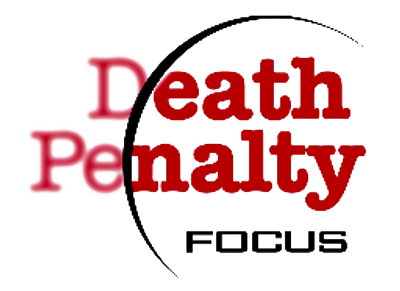This article was originally published on March 10, 2017.
To hear an interview with Aundre Herron about Prop 66, click here.
Most of us watching the election back in November were disappointed, of course, that Proposition 66 passed. Unfortunately, many California voters still cling to the idea that the death penalty is the best way to deal with violent crime. Others are simply confused and uncertain about what it means to end the death penalty once and for all. Clearly, our society still has work to do on this issue. Death Penalty Focus is redoubling its efforts to abolish the death penalty and to move us toward a more just world.
In the meantime, Californians have to deal with the reality of Prop 66, which passed by the slimmest of margins and is a poorly-drafted initiative that seeks to speed up the death penalty by eliminating many of the legal safeguards that ensure the fairness of the criminal justice process and prevent wrongful executions. One particularly egregious example is its provision exempting the California Department of Corrections and Rehabilitation from complying with the Administrative Procedures Act in connection with its execution protocol. This allows the CDCR to hide the method of execution from public view, meaning the state can execute an inmate with any drug or substance it deems appropriate, without revealing that information to the public or being subjected to any official scrutiny or governmental oversight. As citizens of a free society, we should be disturbed by that, regardless of how we feel about the death penalty. The killing of any citizen by the state is the people’s business and should not be done without our full knowledge about the process.
This is the first in a series of stories we will be reporting over the next months on how and why DPF is fighting the implementation of Prop 66 and, when the time comes, how you can help us.
1) What does Prop 66 try to do?
Prop 66 is supposed to speed up the death penalty by:
a) requiring that all state proceedings be completed in five years;
b) forcing lawyers without capital experience to take capital cases whenever there is a “backlog”;
c) transferring habeas corpus petitions from the California Supreme Court back to the sentencing court; and
d) limiting the sentencing court’s time for deciding these cases and prisoners’ ability to appeal the court’s findings.
2) There was a lawsuit filed that stopped Prop 66 from going into effect. What is that all about?
The lawsuit filed on November 9, 2016, to stop implementation of Prop 66 is Briggs v. Brown. It was filed by the Orrick, Herrington and Sutcliff law firm on behalf of Ron Briggs and John Van de Kamp, taxpayers who challenged the law based on the “unlawful expenditures” Prop 66 requires.
The lawsuit’s main points:
a) Prop 66 illegally interferes with the courts’ power to hear original petitions for writ of habeas corpus (allowing inmates to show innocence or that trials were unconstitutional);
b) Prop 66 violates the “separation of powers” rules. The three branches of government are each independent. The Executive branch is the governor and his cabinet and staff. The Legislature includes the state assembly, which passes laws; it also includes laws passed by voters’ initiatives. The courts include the California Supreme Court and all the lower courts. Under separation of powers rules, the legislature or the people cannot dictate how the court conducts the court’s business. Separation of powers is related to “checks and balances,” a principle that ensures that one branch of government does not have more power than another. When any branch oversteps its area of authority, that can create a “separation of powers” problem.
c) Prop 66 violates the single-subject rule, which requires that a proposition can change only one subject under an initiative. In this case, Prop 66 changes too many things: it tries to speed up executions, dictates the time and manner of how the courts handle the cases, changes the rules regarding restitution, as well as the rules about when and where habeas petitions can be filed and heard by the courts. It even cuts the budget and changes the management structure of the Habeas Corpus Resource Center, which was created by the state legislature to help with handling the backlog of capital cases.
The lawsuit was filed in the California Supreme Court on November 9, 2016, one day after the election, and requested a stay to keep the initiative from taking effect. Initially, the Supreme Court denied the stay until the election results were certified. The court’s order allowed Briggs and Van de Kamp to amend the petition after certification. On December 19th, they filed an amended petition and the high court granted a stay the next day, December 20, preventing Prop 66 from taking effect.
The Court allowed the proponents of Prop 66 until January 9, 2017 to file arguments in opposition to postponing Prop 66; Briggs & Van de Kamp were given until January 23, 2017 to respond to the opposition arguments. That development set off a flurry of briefs by intervenors and amici (friend of the court briefs) arguing both sides–for and against Prop 66. DPF is one of the parties that filed a joint letter brief with the state Supreme Court, and will file a formal amicus brief in the next few weeks.
Where Are We Now?
On February 1, 2017, the California Supreme Court issued what is called an “OSC,” an order to show cause, requiring the state to explain why the court shouldn’t find Prop 66 invalid for all the reasons presented by Briggs and Van de Kamp on behalf of California taxpayers. This means Prop 66 will not take effect until the court makes a decision on the lawsuit. The court ordered the Prop 66 proponents to file their “return” or answer to the Briggs petition by February 27th.
The proponents of Prop 66 filed their “return” on time, as ordered by the court. In that same order, Briggs and Van De Kamp were directed to file a “response” to the proponents’ answer by March 20. So that’s what we’re waiting for and where we are as of this printing.
Stay tuned.





